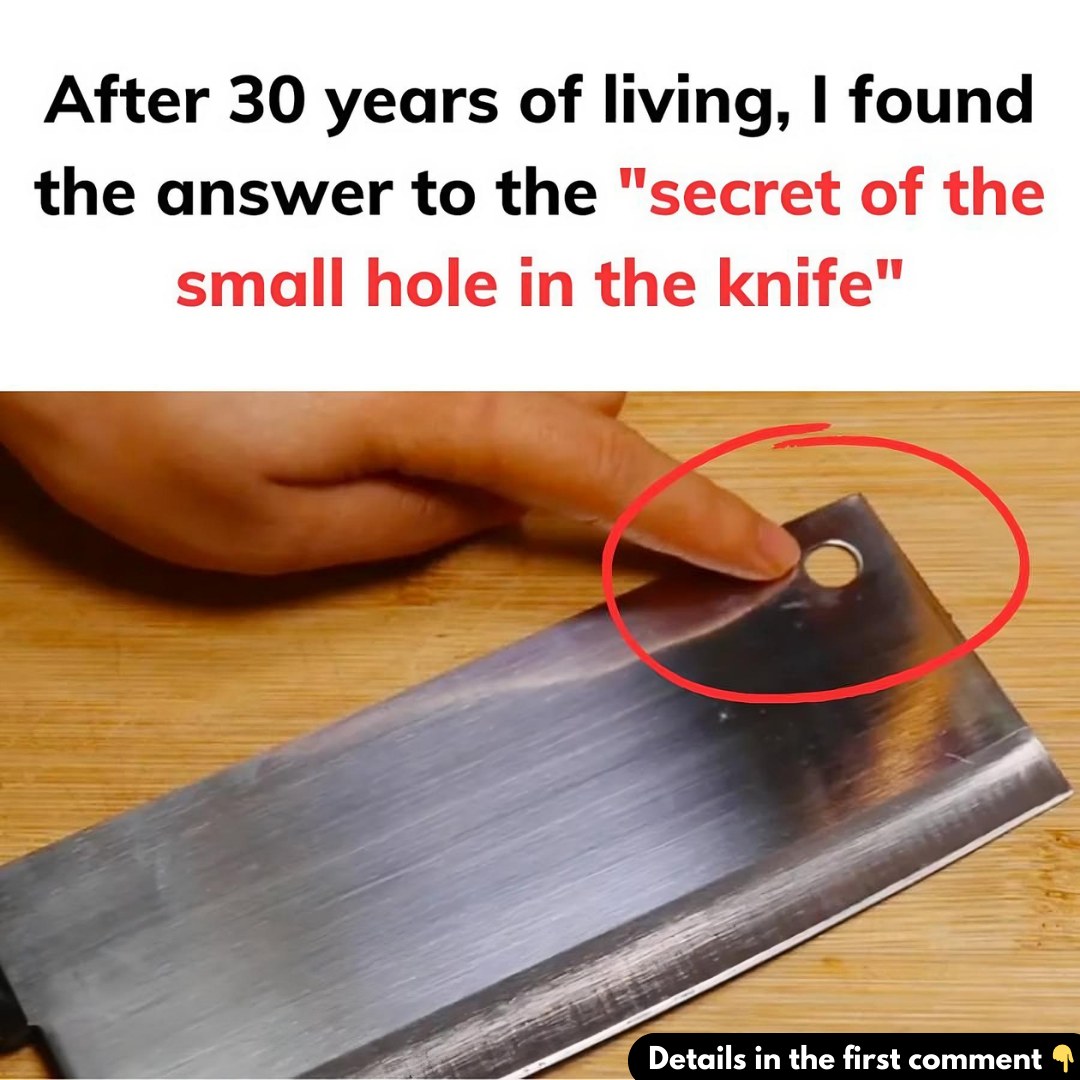A kitchen knife is one of the most indispensable tools in any home, regardless of whether your kitchen is spacious and modern or compact and traditional. But have you ever noticed the small round hole on some kitchen knives and wondered why it’s there? You’re not alone—I was equally puzzled until I decided to dig deeper into its purpose.

After some research, I discovered that this tiny hole isn’t just a decorative quirk; it actually serves multiple practical functions. Once you understand these hidden benefits, you’ll see your kitchen knife in a whole new light and start using it in ways you never imagined.
The Science Behind the Hole: Shock Absorption
At its core, the small hole in a kitchen knife serves a very practical scientific purpose: shock absorption. When you use your knife to cut through dense materials like meat, cartilage, or even bones, a considerable amount of force is exerted on the blade. Without a way to evenly distribute that force, the knife risks cracking, snapping, or even becoming wobbly in your hand.
The hole acts as a stress-relief point, allowing pressure to be evenly spread across the blade. This prevents damage to the knife and reduces the risk of accidents caused by blade instability. It also makes chopping and slicing smoother and less physically taxing. In short, this tiny design feature plays a significant role in keeping your knife reliable and long-lasting.
Efficient Storage and Better Hygiene
Beyond its scientific purpose, the small hole also serves a more practical, day-to-day role: convenient storage and improved hygiene. After washing a knife, many people simply lay it flat on a cutting board or leave it in a dish rack. However, this can trap moisture on the blade, increasing the risk of rust and bacterial growth.
The hole provides an easy solution. By hanging your knife on a hook, you allow water to drain off completely, reducing the chances of rust or mold developing. It also keeps your knife easily accessible and prevents it from cluttering your counter space. In short, hanging your knife not only keeps it clean but also extends its lifespan and enhances kitchen organization.
Snail Tail Removal Made Simple
If you’ve ever prepared snails for a dish, you know how challenging it can be to remove their tails without making a mess or risking injury. Scissors might seem like an obvious tool, but they can often slip, crush the meat, or cause minor cuts.
Surprisingly, the hole in your knife is a perfect tool for this job. Simply insert the snail tail into the hole and use another knife or gentle tapping to separate the tail cleanly. It’s quick, efficient, and far less messy than other methods.
Effortless Date Seed Extraction
Red dates are a staple in many kitchens, prized for their natural sweetness and nutritional benefits. But removing their seeds can be tedious and often results in squished fruit and sticky pulp stuck to your hands.
The knife hole provides a simple solution. Place the date on a flat surface, align the seed with the hole, and press gently. The seed pops out effortlessly, leaving the fruit intact and ready to be used in your recipe. It’s an easy, clean, and time-saving method.
Wrist-Friendly Mincing Technique
Mincing meat can be one of the most exhausting tasks in the kitchen, especially when using a heavy cleaver. The repetitive chopping motion can quickly lead to wrist strain and fatigue.
Here’s a professional tip: insert a chopstick through the hole in your knife. Hold the knife handle with one hand and the chopstick with the other. This secondary grip point offers better control, reduces strain on your wrist, and allows you to mince meat with greater precision and less fatigue. It’s a simple hack that can make a big difference during meal prep.
A Tiny Feature with Huge Benefits
Who would have thought that such a small detail on a kitchen knife could serve so many useful purposes? From shock absorption and improved hygiene to easier snail tail removal, effortless seed extraction, and better wrist support while mincing, the hole in your kitchen knife is far more than just a design quirk—it’s a multi-functional feature.
The next time you pick up your kitchen knife, take a closer look at that little hole and appreciate the thought and engineering behind it. Whether you’re using it for hanging, food prep tricks, or added control, you’ll now know just how valuable this tiny detail truly is.
So, the next time someone asks, “Why does this knife have a hole?” you’ll not only have an answer but also a handful of clever kitchen tricks to share.
Happy cooking! 🍳✨





